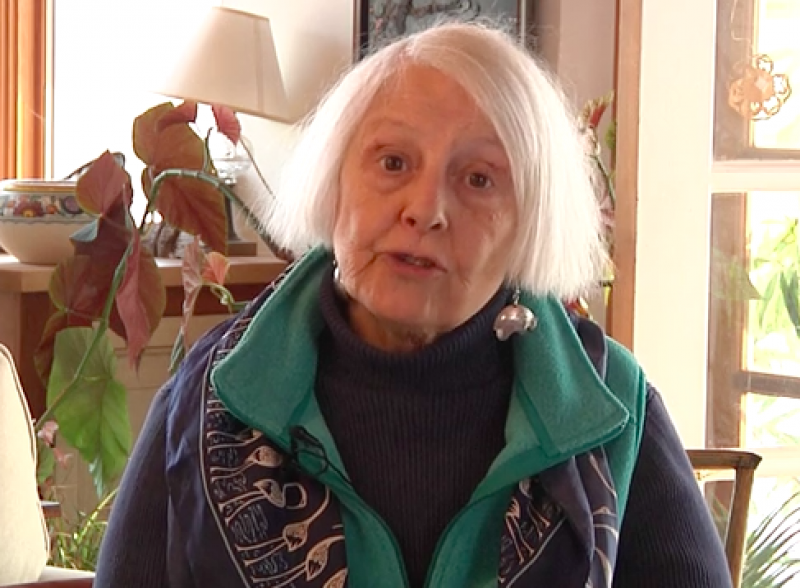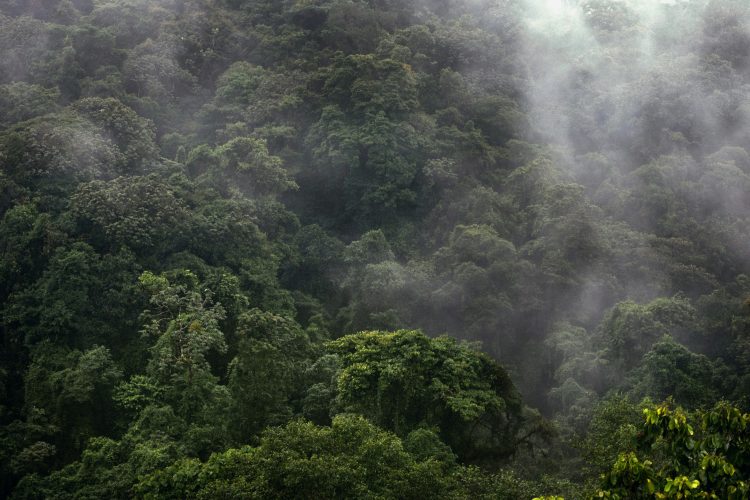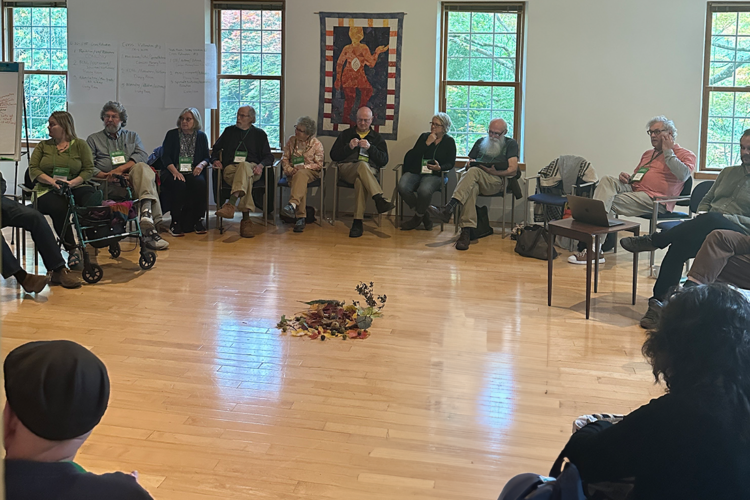Down to Earth: Interview with Quaker Filmmaker Andy Burt

“I didn’t set out to make a film,” says Andy Burt, the creator and director of the new documentary film, Down to Earth: Climate Justice Stories. “I set out to go collect stories. It was young friends who said ‘you should do a video.’ So that’s why you have this film.” Down to Earth is a visual collection of thirteen “stories with the power to change hearts and inspire bold action,” featuring locals in Andy’s home state of Maine who are finding ways to creatively resist climate change and build healthy communities.
“What is important to me about this film is that it is not something I created to entertain people. There are a lot of powerful documentaries that I have certainly been moved by and I have attended so many screenings. I feel that the stories are often not something that common people can touch. You know, Naomi Klein is telling this story–I could never be Naomi Klein. So I wanted to gather stories of people just like me, of folks who are neighbors, that could be shown as an outreach tool to the folks who aren’t part of the climate change choir, not necessarily those that are climate deniers, but those that are sitting on the fence that know there is a problem, but don’t quite know how to act and are asking what can I do? The stories are diverse–people of different ages, cultures, gender identity–and they could be any one of us.”
Andy first saw the power of storytelling while working with the American Friends Service Committee in Indiana in the 1980s. Through a collaborative project with AFSC, the Indiana Council of Churches, and Pastors for Peace, Central Americans were invited to share their personal experiences of the violence and civil wars in their home countries with audiences at academic institutions and congregations all over the state.
“What I saw was that the framework that had been politically presented to people about what was happening in Central America was changed as people put a human face on that story.” The political became personal. As a result, “folks in Indiana, some of them Quakers, got involved in the new underground railroad, which was bringing Central Americans up the center of the country to Canada. It made me realize that stories really could create change for people; they could take action that they never could have imagined taking before.”
Andy never forgot the power of those stories and has now applied that wisdom to the subject of climate change.
“For a long time I have felt that the positive aspect of climate change is that it awakens us to how we are interconnected to every living being on this earth and beyond—and how fragile we are as an earth, as an island. So there’s this sense of being connected physically to all of what’s happening on the earth. But then there is also a time connection, through paleoclimatology, which has allowed us to have a connection to our past, to understand what our place is in time, and then it also allows us to touch the future that our descendants will experience.”
From the Midwest, Andy returned to Maine in 1989. In 2000 she was hired as a consultant by the Maine Council of Churches to organize around climate change through collaborations with environmental groups and religious communities. She worked to get congregations and Friends Meetings to think about energy as well as local food. Andy started programs that supported local community-supported agriculture farms, farmers’ markets, and the state’s first community-supported fishery.
Like Andy’s most recent organizing work, Down to Earth is focused on her state. Yet she adds, “The film’s storytellers could live anywhere. It’s not a ‘Maine story.’ What’s been so powerful with all of the current news is that what is happening at Standing Rock speaks to what is happening here in Maine with our own indigenous people, like the Penobscot Nation, who are engaged in a lawsuit around land and water sovereignty.” Protect South Portland, a citizen-led group that is organizing to prevent the Portland-Montreal Pipeline from carrying tar sands to the city’s waterfront, is also featured in the film.
Andy hopes the film’s wisdom is spread and shared: “I’ve seen it about 100 times and I am moved to tears every time by the storytellers’ experiences and how they entrusted me with their stories…I feel honored and really committed to taking those stories to try to create the change that their bold actions try to foster.”
Andy is promoting screenings of the film around the state and in local and national film festivals. She has also created a workbook with activities and a spreadsheet tool to “look at the memories, experiences, people, and things that have influenced your life. The values that you hold dear and the values that you try to live your life by.” She wants the viewer to experience and share their emotions related to the film even though directly after watching “most people want to go to their left-brains” to focus on facts instead of feelings. She knows that it is through the emotional connection that we create deep and personal change, how we create our own stories, and how those stories lead to action. She also knows how hard it is: “I know what organizing is like. It’s a slog. But you get lots of rewards too.”
Visit Andy’s website at downtoearthstories.org to learn more, order the film for $10, and share it far and wide.
Down to Earth
HOW DO PEOPLE BECOME ACTIVISTS? Are they born that way? How does continuing revelation come into play?
Andy Burt, a Quaker from Maine, has made a sensitive, well-planned, and beautifully edited one-hour film, Down to Earth: Climate Justice Stories, in which she interviews a dozen or so earthcare activists about how they became involved in activism and what it means to them.
We see that it takes a certain type of courage to take on the role of “activist,” but the ordinary people in this movie have done it in a variety of ways and over their lifetimes. Some speak of important experiences of nature in childhood; their wish to protect the natural world has always been part of who they are. Some became activists later in life once they perceived the complexity of the world in a more informed way. For some, connections with others drew them in. Some simply had a feeling that “I must do this.” Once across the threshold, they all found an enhanced inner sense of meaning in their lives.
Down to Earth is honest about feelings of frustration and even despair that are part of the activists’ experience and those interviewed share about how they keep going. If the task is “personal and manageable,” one said, “I can stay with it.” Some express a built-in renewal as their cause evokes a sense of the sacred. Others don’t use that language, but the feeling can be heard in how they talk about their experience of what they are called to do.
Watching Down to Earth is a superb way to spend an hour, whether you are a long-term activist rethinking your leading or a newbie. We are living in a time when we are all called to do what we can on behalf of the Earth and of each other. The people you will meet in this film are doing both.

